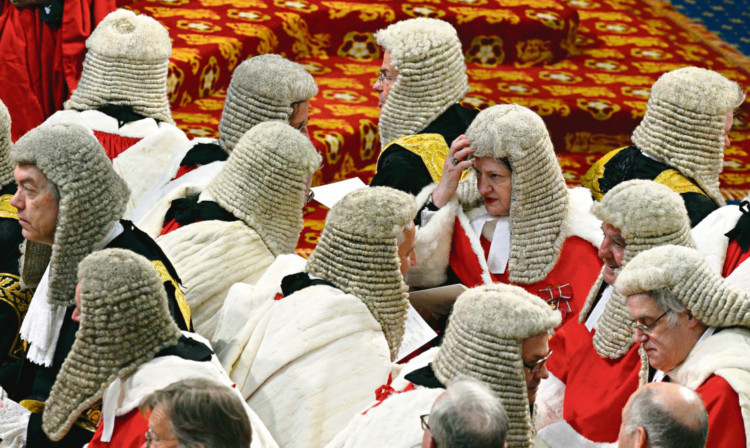
Taxpayers have forked out more than £20 million for High Court judges to stay in plush lodgings in just five years.
Figures released by the Ministry of Justice have revealed the huge sums spent on putting up just a handful of England’s top judges in luxury accommodation.
Some of the historic buildings have their own tennis courts, wine cellars and full-time staff.
The total bill for 33 permanent judges’ residences between 2009 and last year was a staggering £20,235,054.
The Ministry of Justice argues that judges travelling from London to hear important cases need a secure base where they can stay without fear of coming into contact with lawyers, defendants and witnesses.
But critics say taxpayers should stop funding the expensive accommodation and want to see judges moved to B&Bs.
John O’Connell, director of the TaxPayers’ Alliance, said: “This is a complete waste of money. It’s ludicrous that putting judges up in a luxury five-star hotel would actually be a cheaper option in many cases.”
The public spend on judges’ lodgings hit its peak in 2010/11, when £5.5 million was lavished on accommodation. That paid for 15 permanent residences, used by judges throughout the week and another 17 premises including hotels and luxury bed-and-breakfast establishments.
In 2009/10 the cost was £4,905,566 and in 2011/12 it reached £4,541,401. Last year the cost was £5,232,600, with judges spending the night at permanent lodgings 894 times at a cost of about £3,000 per stay or £15,000 per week.
The Ministry of Justice (MOJ), which released the figures to The Sunday Post, said it took into account the frequency of stays as well as ongoing staffing and maintenance costs.
However, the MOJ refused to reveal the locations of permanent judges lodgings for “security reasons”. That is despite the ministry publicly objecting to a recent planning application for a paintball centre in Plawsworth, near Chester-le-Street, County Durham, near the Grade II-listed Southill Hall.
The hall is owned by the MOJ to house judges and their clerks during hearings at Durham, Newcastle and Teeside crown courts.However, expanding the operation would have meant disturbing the “peaceful residential amenity” and security of high court judges on the north-east circuit, the MOJ said.
Durham council refused the application. Figures for 2008 revealed that £384,000 was spent on the upkeep and staffing of Southill Hall.
Lumley Castle, an impressive four-star hotel just four miles away, advertises its most luxurious rooms at about £250 per night.
An MOJ spokesman said the total cost of judges’ lodgings was calculated differently in 2012/13 after a new team took over.
Justice Secretary Chris Grayling and Lord Chief Justice Lord Thomas are carrying out a review of the current situation.
An MOJ spokesman said: “We intend to report the findings this spring. The most serious or complex cases are heard in courts nearest to where events took place so it’s as convenient as possible for the victims or witnesses involved.
“This means High Court judges can spend long periods away at different courts around England and Wales, and they need secure and suitable accommodation when doing so.
“But, given the current financial climate, it is also vital we take a long, hard look at all departmental spending.”

Enjoy the convenience of having The Sunday Post delivered as a digital ePaper straight to your smartphone, tablet or computer.
Subscribe for only £5.49 a month and enjoy all the benefits of the printed paper as a digital replica.
Subscribe